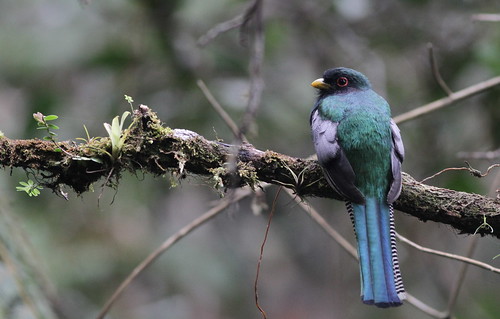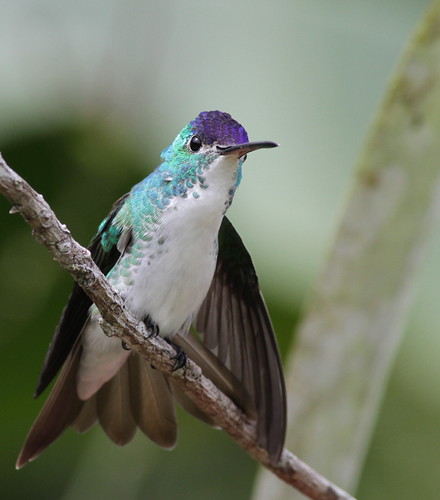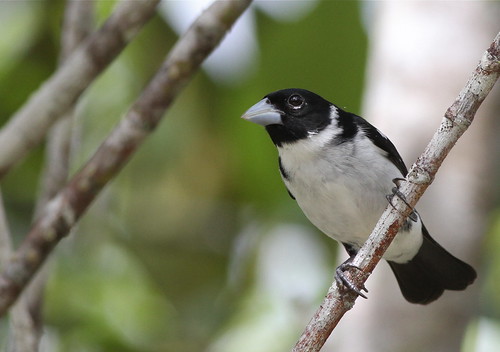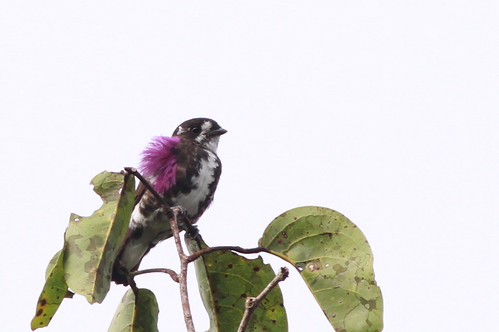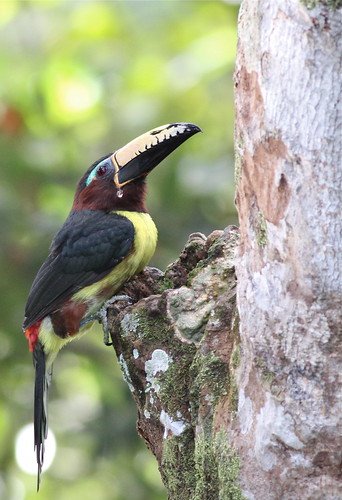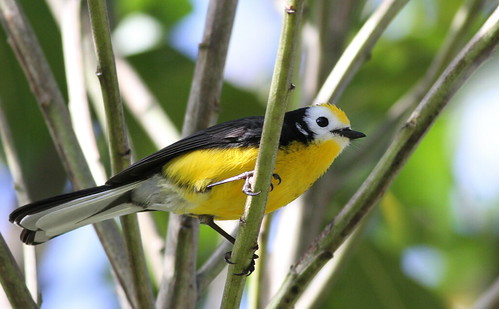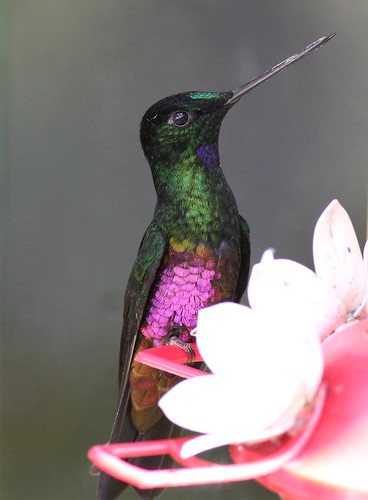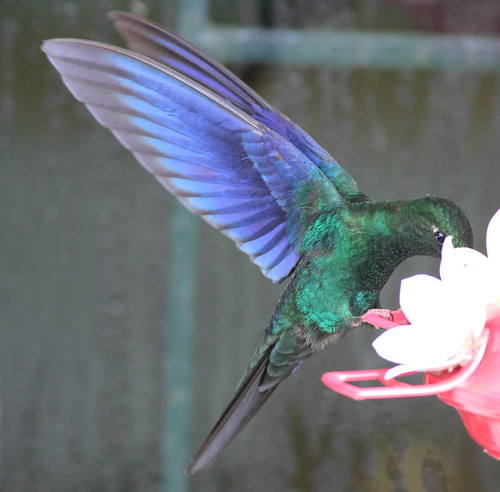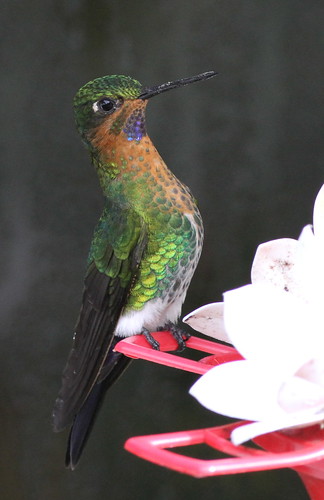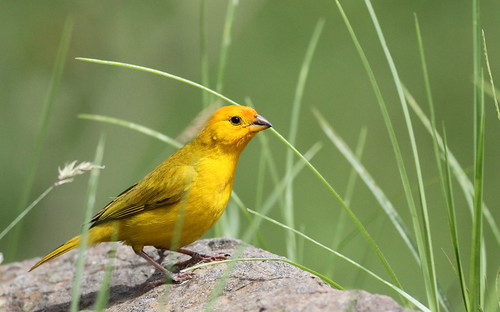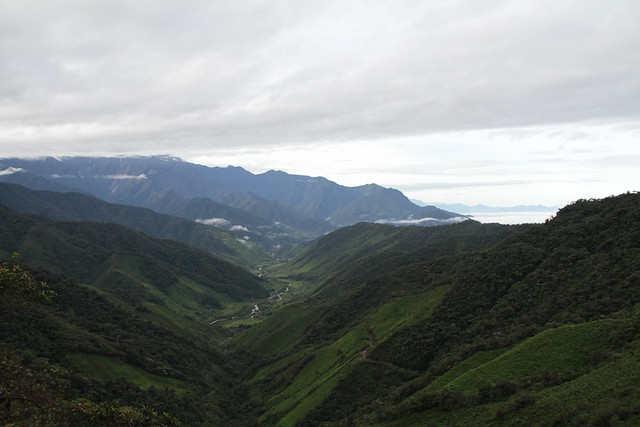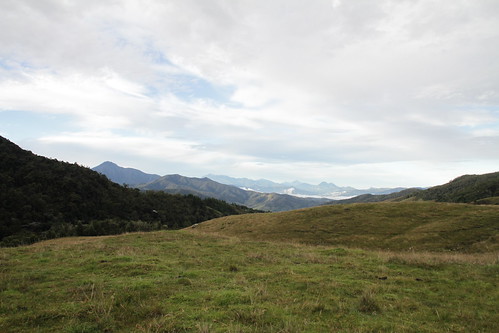
After a couple days at the great Piha reserve, we had to head back to Medellín, and off to Urrao. We arrived in the north bus terminal in Medellín, and had to head out of the south terminal, a highly inferior terminal in the fact that it didn't have a Dunkin Donuts, our equivalent of the American embassy wherever we went. Today was a solid day of travel, from 6am at the Piha reserve until after dark when we arrived in Urrao. The drive was interesting in that it went through valley after valley that had been denuded of all vegetation to grow coffee. It was a rather shocking illustration of why you should buy shade-grown coffee, the difference in ecological impact is huge.
However, the most notable part of the drive was when we rounded a corner to see a ~50 foot stretch of road that was covered in mud, with more coming down from the bare slope above the road every moment. Rain came down the entire drive to Urrao, so this was something that had happened recently and was still happening. It was mildly unnerving looking upslope and seeing small stones rolling down, and also trickles of watery mud adding to the stuff already on the road. We made a go for it through the mud, but we couldn't get up enough speed to combat the slight upwards angle of the road, and had to retreat back to solid ground. After sitting there for about 40 minutes, the resourceful driver paid a construction worker to drive the tractor that was sitting on the side of the road, and he promptly bulldozed the mud out of the road, and we were on our way - it could have been much worse.

Long-tailed Sylph
Once at the town of Urrao, we went to the hotel we were planning to stay at, which turned out to be one of the best hotels I've ever stayed at in Latin America. The water pressure was so high that the drain had trouble keeping up, the water was hot, internet fast, beds soft, and they gave you free drinking water. What more could you ask for? Up early the next morning we hopped in a 4WD pickup to go to the starting point for our hike to the next spot: the Colibrí del Sol reserve, a place I'll just call it the Urrao reserve from here on out. The Urrao reserve is unique in that it hosts at least 4 species that are pretty much un-seeable anywhere else: the Urrao/Fenwick's Antpitta (a species that still isn't officially described), Chestnut-bellied Flowerpiercer, Paramillo Tapaculo, and Dusky Starfrontlet, the latter being the bird that the reserve is named for, the "Sun Hummingbird". I say at least 4 species, because there are subspecies of Rusty-faced Parrot and Black-throated Flowerpiercer that are possibly future splits, only time will tell. Getting to the reserve requires multiple hours of walking, or you can pay a small fee to ride a horse instead of walking. Andrew and I opted to walk, and after a couple hours of uphill hiking at over 2500m of elevation, we were pretty beat. Of course, what option did we have except to hike 2km more with hundreds of meters more of elevational gain? So thats what we did, after devouring a much needed breakfast at the lodge and dropping our packs off.
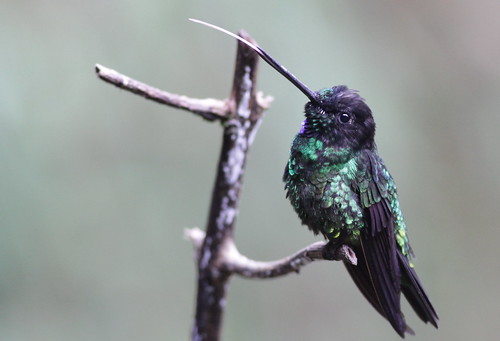
Dusky Starfrontlet
In this first afternoon we managed every single target bird at this location, and so we shortened our stay by a day, heading out the next morning rather than spending two nights there. The paramo was beautiful here, with many frailejones, a really interesting local plant that is in the sunflower family, and grows close to head height with impressive thick stalks with yellowish flower clumps at the top, and was quite abundant above treeline here. The forest guard here was very impressive in his local knowledge and service, much like all the other reserves that we visited. He showed us spots for multiple birds where we got them almost instantly, always a good thing.
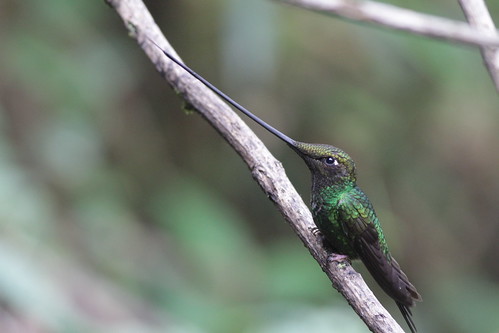
The always amazing Sword-billed Hummingbird
After our afternoon of getting everything, we had a good evening downing cups of hot chocolate and talking with another traveler there from Georgia, always nice to have a conversation with birds in English with another person while traveling. The next morning we got up to watch the feeding of the Urrao/Fenwick's Antpittas, which was a treat as it always rocks to see antpittas. Almost more notable than the antpittas at the feeding station was an Undulated Antpitta that hopped up onto an exposed branch on the side of the path as we headed back to the lodge! A rarely seen antpitta, this was my first one seen, despite having heard many. Our walk back down was mostly uneventful, despite a fruitless couple hour vigil at the mouth of a forested valley hoping for flyover Rusty-faced Parrots. With an extra day that we didn't expect, we did nothing but hung around in the hotel on the internet for about 24 hours, uploading photos and recordings and talking with people back in the states. Next stop is Las Tanagaras reserve - and thats where I'll pick this up!

